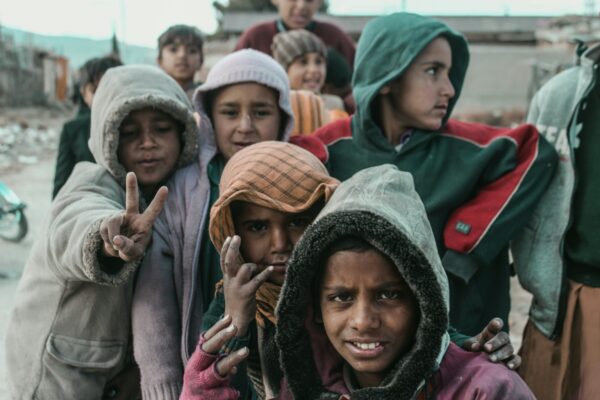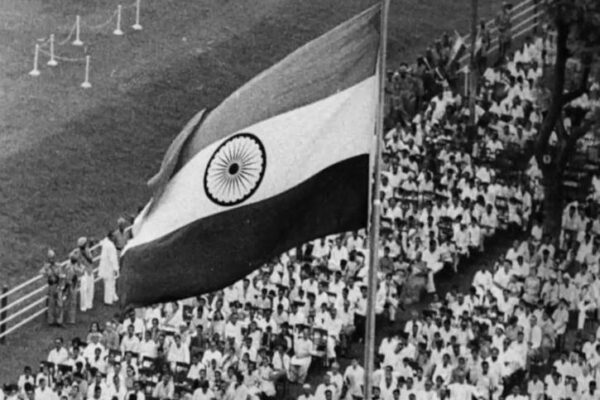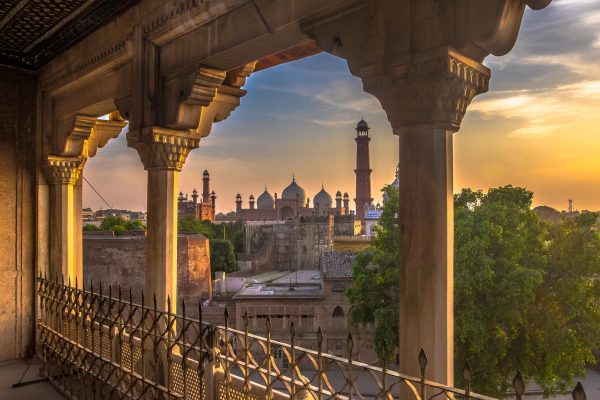Elections are often considered as a celebration of democracy, where a voter feels empowered after casting their vote. But for Ashfaque, it’s a farce in his part of the world.
Because he is a Kashmiri.
“What will it achieve for us?” he said when asked why he didn’t vote. “The military occupation remains here, the structure of occupation remains here.”
The world’s largest democratic elections concluded a few weeks ago in India and the nationalist Prime Minister Mr. Narendra Modi secured his government for another five years. While nationalism, sectarianism, and bigotry are rising in India with the rising temperature, in Sri Nagar the weather is pleasant at night. The season of majestic tulips in the mournful valley is over, though the beautiful apple orchards are blossoming with their white flowers now. In one of those evenings, Ashfaque met with me after finishing his university classes. In his mid-twenties, with full-grown beard and a slightly built body, he is a soft-spoken man. He answers the questions with a smile and uses metaphors to register his anger sometimes.
Anger against the politicians, the humiliation, and the siege.
Political parties in Kashmir are sub-contractors of the Indian government. What the military cannot do directly, they do it in civilian face,” he said politely.
Posters, buntings of political leaders, some with serious and some with smiling faces paired with their election symbols are still visible in Sri Nagar city, but only in a few nooks and corners; areas where they garnered some votes. The rest of the city doesn’t care about them and their promises. Colorful billboards of the Election Commission of India has also urged Kashmiris through posters and TV ads to come out of their home and exercise their democratic right, the right to vote!
But Ashfaque even doesn’t want to use the NOTA (None of the Above) option.
“That in a way is also participation in Indian democracy, and that’s nowhere in our dictionary.” He fumbles while speaking but it doesn’t affect the convictions on what he is saying.
Sri Nagar and some other parts of the Jammu and Kashmir voted in April. Most parts of Sri Nagar, the largest city of Kashmir, looked abandoned and streets deserted. A huge presence of government forces, a few media vans outside the famous voting booths, and fear of some unprecedented incident was in the air.
The day when citizens in other parts of the country came out in large numbers on street to exercise their right-to-chose, Sri Nagar looked like a curfewed city, with paramilitary forces guarding bridges and roads amidst the snow-laden mountains. By evening, 13% of the people had cast their vote in Sri Nagar. More than 80% of people didn’t use their democratic right.
Of course, elections boycott and stone pelting on polling booths and on armed forces can be seen in Kashmir, but there is always another side of the story. And that story speaks for electorates. If they are made to believe that politicians are their future builder, the fingers that hold the stone to throw could also be used to cast a vote.
According to Ashfaque, Kashmir has never seen democracy. “It’s a conflict zone,” he explains, “and the way India is conducting elections under such huge military is not the right way.”
Being born and raised in a conflict zone, a certain kind of mindset and the narrative weave around their life. Youngsters like Ashfaque who are educated and politically conscious are being moulded around the stories of violence and betrayal by the Indian state, and they feel they don’t have a dignified life. For them, elections are just a meaningless exercise, propaganda run by rulers sitting in Delhi.
These elections are only to show the UN that they are with us, but we will never vote them. We will die, but will not accept the occupation.”
The occupation – the word he used repeatedly. According to the Oxford dictionary, the term denotes “to take hold, attack, to add territories, to enslave, to colonize.”
What is occupation for him?
“There are many things, like the first and foremost is visible occupation, which is the military boot on the street, almost 700,000 are here. And then there is a system of occupation, the structure of occupation. There are police, the occupation of our resources, land, censorship, surveillance, all that amounts occupation.”
I asked if he even recognizes India anymore.
“Yes, I do. As an occupier” he responded, smiling gently.
What makes him think like that?
It’s in history. They arrived 70 years ago. The military boots arrived with fake succession stories and since then they are here. And with the renewed rebellion of 90s, they are everywhere, in the orchards, in lanes, in the civilian localities. If that’s not an occupation, then what it is?”
A generation of Kashmiris living through the volatile decades-long conflict have similar views. Youngsters like Ashfaque born and brought up in an environment where protesting on streets with stones in one hand and slogans of Azadi- freedom on their tongue, clenching guns and throwing grenades have become their passion.
A number of insurgent groups with anti-Indian sentiment have been at war with India for freedom or for merging with Pakistan since 1989.
The world has reduced its attention towards India and Pakistan due to the rift they have developed towards each other recently, thus magnifying the insurgency in Kashmir. The suicide bomber who killed more than 44 Central Reserve Police Forces (CRPF) in February this year was a twenty-year-old Adil Ahmad Dar from South Kashmir’s Pulwama.
Pulwama produces rice in large quantity, which makes it known as the rice bowl of the state. It is also famous for milk production, for which people celebrate Dudh-Kul. The apple orchids of Pulwama also produce militants. The attack on CRPF was claimed by the Pakistan-based terrorist organization Jaish-e-Mohammad. In a revenge attack, a nuclear-armed country organized air-strikes on another nuclear-armed country. This just shows the severity of the piece of land both countries are fighting for.
How does a young Kashmiri see an attack like Pulwama?
We mourn every killing, even if it’s an Indian soldier who is here. We are concerned about the lives which are getting wasted, be it an Indian soldier who gets killed here or be it a Kashmiri who gets killed.”
More than 500 people were killed last year in Kashmir valley, including militants, civilians, and security forces – the highest such toll in a decade.
“But it’s a combatant versus combatant issue. There are combatants on our side, and people of occupation are combatants on the other side. Pulwama was a big thing, so it got huge coverage. But it happened daily,” he added in the same breath.
Kashmiris live in a place where guns speak louder than man. They either die in violence or in silence. The region remains one of the highest militarized zones in the world in the peacetime, with oppressive laws in force that disregard their lives and dignity. The reality of Kashmir is an example of severe human rights violations, and the impunity perpetrators enjoy after committing crimes are astonishing. For Kashmiris, the presence of the military is not just a continuous reminder of their dead, it’s a kind of lifelong damage. The damage, which they get in the form of pallets of bullets, is almost every day.
“And it’s simple, a native of this land is asking you to go, and reminding you as you are an occupier,” Ashfaque asserted his point on the Pulwama attack.
In Kashmir, graffiti on walls and shop shutters like “war till victory” and “go back India” is nothing new. What is new, however, are the school and college going girls on the streets with stones. More and more young people have become militants in 2018, which had managed to go down a few years ago. This has increased armed struggles. Some are well educated and have promising careers ahead of them, but had picked up guns against the military stationed in the valley.
Though armed militancy had shrunk to a few hundred now in comparison to thousands in the 90s, unarmed men and women have been gathering to military encounter sites to protest and express solidarity with militants. These ordinary Kashmiris, who fear not that they may turn into corpse too, do it nonetheless. In the decades-long repression, they’ve lost all hope and all fear. Thousands gather in the funerals of fallen militants, where women sing songs of valour for the martyrs. Every funeral inspires the next generation of conflict-affected youngsters to join the same path of blood and tehreek, meaning resistance.
The year 2016, saw armed resistance arising again. This is because a young tech-savvy militant named Burhan Wani was killed by the Indian army. That was a time of crisis. Kashmiris in the thousands came out of their home and faced security forces. They threw stones at security forces and the security forces, in turn, sprayed tear gas and fired pellet guns, maiming hundreds.
Sri Nagar based human rights activist Khurram Pervez stated:
When Burhan was killed Indian newspapers and local analysts claimed a lot of boys might join militancy, but not many have joined. And infiltration is at all time low, because there are border skirmishes between India and Pakistan. But if you see the number of militants killed, at least 90% of them are identified as local Kashmiris. So if more than 90% of militants getting killed are Kashmiris, it also means at least 90% of the militancy is completely homegrown.”
India has long accused Pakistan of giving a safe haven to militants active in the valley, but remains silent on the rising number of homegrown militancy in Kashmir.
A few days after the Pulwama attack, in a press conference in February, Lt. Gen. Kanwal Jeet Singh Dhillon, Commander of the Army’s Srinagar-based 15 Corps, asked the mothers of Kashmiri youth to request their sons who have joined terrorism to surrender.
“Anyone who has picked up a gun will be killed and eliminated unless he surrenders,” he had warned.
So what are his views about militancy in valley, I asked Ashfaque?
Kashmiris have chosen a path of resistance, and it demands sacrifices. Militancy is one shoot of the resistance. There are political means, diplomatic means,” he answered in a low tone. “What they called terrorists, in Kashmir they are called militants. Bhagat Singh was a terrorist for the British, but he was a hero for India. Same is the case of Kashmir, these terminologies changes with respect to the geography.”
Years of cultivated hatred, violence, atrocities, and human rights violations in the bright green valleys of the Himalayas have created a stubborn generation of youngsters, and it’s the disturbing new reality of Kashmir.
Referring to the latest heightened tensions between India and Pakistan, Khurram Pervez states repeatedly that youngsters like Adil Ahmad Dar were not merely young men who were brainwashed by an Islamist outfit or a suicide bomb overnight.
Pointing towards a crucial factor Khurram said: “If we look at this case (Adil Ahmed Dar) and many other cases like this, these boys are not joining militancy as the first choice, but they are wanting to be part of a political protest because they are choked, they are arrested, humiliated, tortured, and then in jail there is a transformation after this brutalization and they join militancy. So is the government of India not responsible for this?”
The Indian government has approached Kashmir with brutality, and a dangerous form of nationalism has taken over its human approach.
When the Kashmir valley was found collapsed in maintaining law and order with even normal law difficult to evoke, the state government declared on July 5, 1990 that the valley would be classified as a disturbed area under Section 3 of AFSPA. Under this section, the state could arrest, search, and destroy properties and provide legal cover to armed forces from prosecution for these acts.
“For the last 29 years, they have declared an emergency in Kashmir. We cannot organize any program where more than 4 people will assemble. We have to seek permission from the government and rarely they give permission if it’s a dissenting program,” Khurram said.
Censorship is used as an instrument of fear and intimidation in Kashmir as well. Khurram added:
If you permanently choke political space and do not allow people to organize peaceful political programs and rallies what are you actually investing in? You are pushing people to the wall and are pushing them to join militancy. Because you are not giving any vent to the political dissent here.”
Kashmir for Kashmiris is an open prison. For tourists, it’s Heaven on Earth.
The Kashmir dispute is one of the oldest items on the agenda at the United Nations. India and Pakistan both agreed to a plebiscite that Kashmiris have the right to decide their future. But decades passed and nothing has been resolved.
“We have been promised in 1947 that we will get a chance to chose our destiny, whether we would like to stay with India, remain independent, or go with Pakistan. The first Prime Minister of India, Pandit Jawahar Lal Nehru, promised in the heart of the city in Lal Chowk, that people would be given a chance to decide their future. That promise was broken down by the successive governments,” explained Ashfaque.
In the current scenario, the right to self-determination for Kashmiris has just become a political affair. It’s been seventy years of betrayal for many.
In 2018, the UN published a 49-page report of human rights violations in the area of Kashmir controlled by India and Pakistan. It reported human right violations and abuses on both sides of the Line of Control. The report captured the scenes of violations and abuses happened in Jammu and Kashmir from July 2016 to April 2018.
Khurram has severe accusations:
Torture is one of the biggest widespread human rights violation which happens here through armed forces and police as well. Illegal detention is a very regular issue here. Then extrajudicial executions which are happening because people come out on the street in protest. Every police station is a torture centre, every army camp is a torture centre.”
“And now we also see videos of army and police, they have recorded themselves when they are torturing people, this is evidence. And despite this public evidence available, there is no statement from the government of India that they will stop it,” continued Khurram, who has contributed to the UN report.
Reacting to the UN report, India said it is “fallacious and tendentious”, with the Ministry of External Affairs (MEA) saying the report is “overtly prejudiced” and seeks to build a “false narrative”.
Away from the troubled city’s chaos, close to the neighborhood of timber and brick homes in the old part of the city, lies the Eidgah (an open space for Eid prayers) of Srinagar. Once a paddy field, it’s mostly a dusty plain field now. After the break out of insurgency in 1989, this place became the home of dead killed in the war against India. Row and row of tombstones filled with some as young as 2 years old and some as old as 72 lays here. Later, a part of the prayer ground designated as the ‘martyrs’ graveyard was created. India and Pakistan had fought three wars since 1947, two over territory. 70,000 people have been reported to be killed in the violence since the armed revolt.
From a distance, the fenced cemetery looks like a green patch of land. The graves where grass, irises, white and purple colors of flowers bloom among the dead. Graveyards having written verses from the Quran and couplets of Urdu and Persian poems about the martyrs can be seen. Every epitaph has ingrained the word Shaheed, meaning martyr, over them. Kashmiris have a long tradition of honoring the dead as martyrs. Outside the graveyard, besides the larger remaining part of the prayer ground, the children who play cricket and the youth who ride bikes are the same age as those who are buried in the cemetery. Here the dead and the alive all live together.
“Kashmiris can forgive but they’ll not forget what has happened to them,” said Ashfaque before he melted into that cold night.





